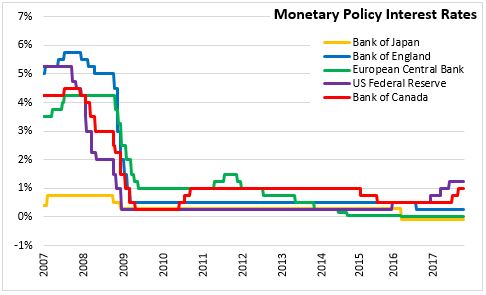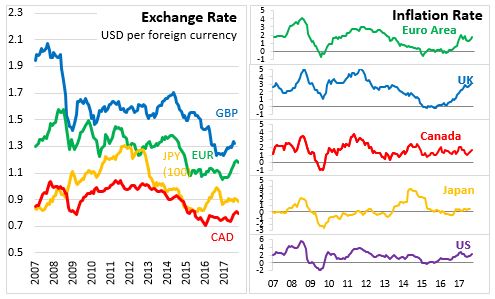The Economics and Statistics Division maintains archives of previous publications for accountability purposes, but makes no updates to keep these documents current with the latest data revisions from Statistics Canada. As a result, information in older documents may not be accurate. Please exercise caution when referring to older documents. For the latest information and historical data, please contact the individual listed to the right.
<--- Return to Archive
For additional information relating to this article, please contact:
October 26, 2017MONETARY POLICY: EUROPE At today’s meeting, the Governing Council of the European Central Bank(ECB) announced that the key ECB interest rates are unchanged, and that they are expected to remain at the current level for an extended period of time, well past the horizon of net asset purchases. Monthly asset purchases will run at the current pace of €60 billion per month until December 2017 and then continue at a pace of €30 billion per month until September 2018.
Euro area real GDP grew 0.7 per cent in Q2 after growth of 0.6 per cent in Q1. Data points to broad-based growth across sectors and countries. The latest data point to continued growth momentum in the second half of 2017. Private consumption is supported by rising employment and household wealth. Business investment continues to benefit from very favorable financing conditions while global recovery is supporting exports.
Euro area inflation was 1.5 per cent in September, unchanged from previous month. Headline inflation is likely to temporarily decline due to energy prices. Underlying inflation has moved up since early in 2017, but is not yet on a sustained upward trend. Wage growth has increased but domestic cost pressures remain subdued. Inflation in the euro area is expected to rise gradually over medium term supported by monetary policy measures and the absorption of economic slack.



Sources:
European Central Bank
<--- Return to Archive